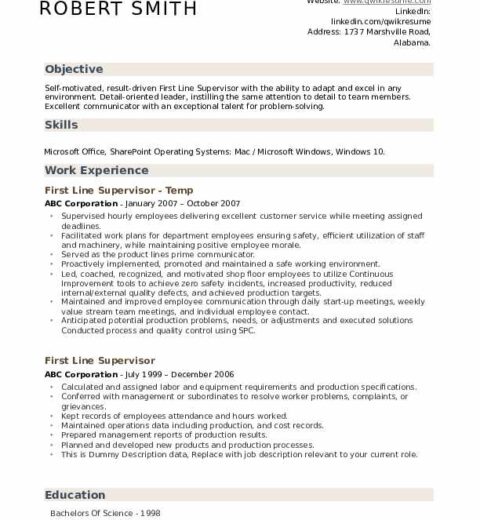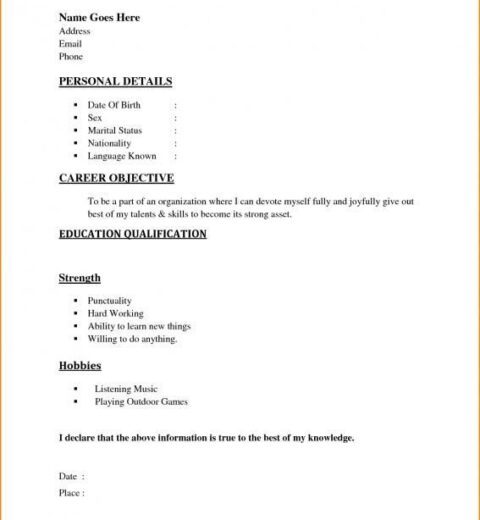In today’s competitive job market, crafting a compelling resume is paramount. Recruiters are inundated with applications, making it crucial for job seekers to present their qualifications succinctly and effectively. Understanding what recruiters expect to see on a resume can illuminate the path to securing that coveted interview. Below are the fundamental components and strategies that job seekers should consider incorporating into their resumes.
1. Contact Information
At the very top of your resume, clear and easy-to-find contact information is essential. This includes your full name, phone number, email address, and LinkedIn profile link, if applicable. Avoid overly casual email addresses that may detract from your professional image. It is advisable to use a simple, professional email format.
2. Professional Summary
A succinct professional summary or objective at the beginning of your resume provides recruiters with a brief overview of your qualifications and career aspirations. This section should encapsulate your key skills, years of experience, and unique attributes that make you a suitable candidate. Tailoring this section to align with the specific job you are applying for can significantly increase its effectiveness.
3. Work Experience
Work experience is often the backbone of a resume. Each role should be detailed with clarity and precision, including the job title, company name, location, and dates of employment. Use bullet points to highlight your responsibilities and achievements in each position. Quantifying these accomplishments with metrics or specific outcomes can greatly enhance the impact. For example, instead of saying “increased sales,” use “increased sales by 30% within one year.” This empirical approach lends credibility and showcases your contributions.
4. Education
Educational background is another critical element of a resume. List your degrees, major(s), and the institutions attended, along with graduation dates. For recent graduates, this section can be prioritized to highlight academic achievements, honors, or relevant coursework. If you possess certifications or professional training that pertain to the job, ensure to include those as well. Recruiters appreciate continuous learning and professional development, which can set you apart from other candidates.
5. Skills Section
In today’s fast-paced work environment, technical skills and soft skills are both paramount. Create a dedicated skills section that encompasses both categories. Technical skills demonstrate your proficiency with industry-specific tools and software, while soft skills reflect your abilities in communication, teamwork, and problem-solving. Tailoring this section to incorporate keywords from the job description can also help pass applicant tracking systems (ATS), which many companies utilize to screen resumes.
6. Relevant Projects or Achievements
Including relevant projects or significant achievements can provide depth to your resume. If you have completed noteworthy projects, led initiatives, or received awards related to your field, make sure to spotlight these experiences. This not only showcases your ability to deliver results but can also evoke a sense of credibility with recruiters who appreciate tangible proof of capability.
7. Volunteer Experience
Many recruiters value volunteer experience as a testament to a candidate’s character and community engagement. Relevant volunteer work demonstrates initiative, empathy, and the ability to work collaboratively towards a common goal. List your volunteer roles with similar attention to detail as you would for paid positions, focusing on the skills and contributions that align with the job requirements.
8. Additional Sections
Depending on your industry, consider adding sections for publications, conferences attended, languages spoken, or professional affiliations. These additional dimensions can provide a fuller picture of your professional persona and may resonate with recruiters seeking well-rounded candidates. However, ensure these sections are relevant and enhance your overall narrative without detracting from the resume’s primary focus.
9. Formatting and Design
While content is king, presentation also plays a significant role. A well-formatted resume should be clean, organized, and easy to read. Utilize white space effectively and choose a professional font. Avoid excessive graphics or complex designs that may distract from the substance. Consistency in formatting—such as font size, bullet points, and spacing—is crucial for a polished look.
10. Tailoring for Each Job
Lastly, it’s imperative to tailor your resume for each job application. This entails emphasizing different skills, experiences, and keywords that align with the specific role. An unchanging, generic resume is less likely to capture a recruiter’s attention. By customizing your resume, you demonstrate genuine interest in the position and increase your chances of progressing through the hiring process.
In conclusion, assembling a comprehensive and tailored resume that meets recruiters’ expectations involves attention to detail, strategic presentation, and a clear focus on relevant skills and experiences. By encompassing all these elements, job seekers can craft resumes that not only stand out but also resonate with prospective employers, consequently augmenting their chances of securing interviews and offers in an increasingly competitive landscape.




